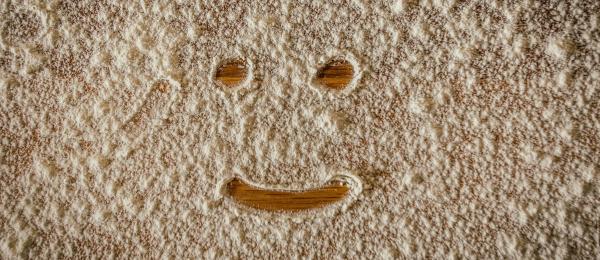
Besan or Bengal gram flour, made from Bengal gram pulses are widely used across India and a few of its immediate neighbors. An instant reminder of deep fried fritters or pakodas, sweets made of besan is popular as well. A fantastic binder for cuisines, Besan is nutrition loaded and an excellent protein source for vegans and vegetarians. Here is an interesting insight into the popularity of besan flours: It is the most used flour, more popular than wheat flour, according to the Indian Ministry of Food processing industry.
Besan is perhaps one of the most misunderstood flour. Benefits of this flour is either marred due to the fact that it is mostly being used as a batter for deep-fried food or because of the fact that it is taken to be an unhealthy choice. However, it is interesting to notice how the beauty industry swears by its benefits.
Here are a few more nutritional facts about besan, which is obscure from most.
Excellent source of protein:
Made from chickpeas or from Bengal grams, which are categorized into legumes and pulses respectively, besan is high in protein content. It is also extremely high in fiber content.
Gluten-free:
Besan is an organically gluten-free flour. Most of us have a negative take on gluten, for good reasons. Gluten affects our health in an adverse manner. Hence the very fact that besan is sans gluten qualifies it as a good for health food.
Promoted by nutritionists:
Dieticians being the nutrition experts, are aware of what a body needs, to stay healthy. It is, therefore, not surprising when a dietician suggests besan chilla or a besan roll in the diet schedule of someone trying to lose weight. The reasons why besan gets recommended could be any of the one listed below:
• Being gluten free besan
• The protein content of besan is way more than many of the staple grain flours
• Contains folate, a Vitamin B variant, vital for the production of RBC
• Folate helps a baby's neural tube develop into the brain and spinal cord
• Besan is, therefore, a must for pregnant ladies
• Besan has a dense consistency which makes it ideal for consumption for weight loss
Soluble fibres:
Besan contains soluble fibres. This makes it extremely cardiac friendly. A soluble fibre dissolves in water and forms a gel-like substance. This gel, in turn, puts a check on the cholesterol and blood sugar levels.
Abundant in Iron:
Half a cup of besan or chickpea flour can fulfil an adult's daily need of iron by 30%. This is what makes besan a must for people who have deficient blood levels and are therefore anaemic.
Prosperous for bones:
Chickpea flour has an abundance of phosphorous in it. This in itself does not really help the bones become stronger. However, when phosphorous combine with calcium, together they boost bone formation.
Thiamin boosts energy:
Besan is an energy booster since it helps to drive fatigue away. This is due to the presence of the vitamin called Thiamin in besan, that is capable of converting food in the body into energy.
Magnesium helps regulate blood pressure:
Besan contains magnesium. Research shows that if 368 gms of magnesium is fed to the body for a period of 3 months, systolic and diastolic blood pressure, goes down in the body on its own, by 2 mm and 1.8 mm respectively. Systolic blood pressure is the measurement of pressure in the blood vessels when the heart is beating, whereas diastolic blood pressure measures the blood pressure in the veins when the heart rests in between the beats.
Low Glycemic controls diabetics:
Besan is low on Glycemic index. This basically means that besan takes time to be digested. This, in turn, helps the body to increase the blood sugar level slowly, rather than spike it. Consequently, insulin levels stay in control which is the primary factor for diabetics
Vitamin B 6 provider:
Neurotransmitter serotonin acts as an antidepressant in the body. Our bodies need to synthesise this from the nutritional vitamins we consume. For the formation of Neurotransmitter serotonin, the body needs B6. Besan is a good source of the same, which makes it ideal for consumption to maintain good mental health.
Conclusion:
Besan is a flour and can be consumed in various ways. However what needs to be remembered here is how besan contributes to a healthier lifestyle. The right to chose the best food for our own health, therefore, remains with us.


